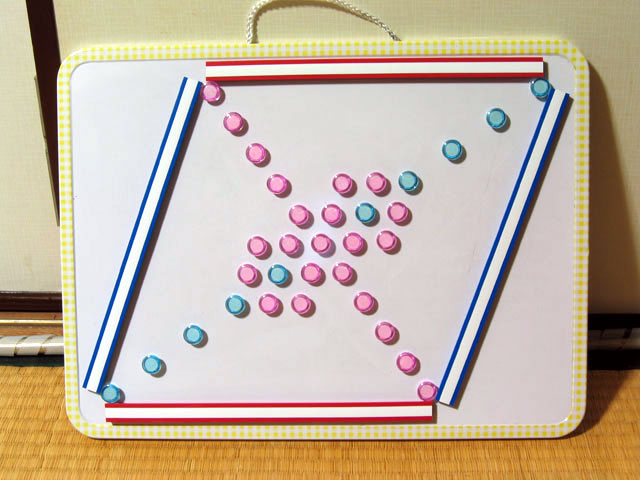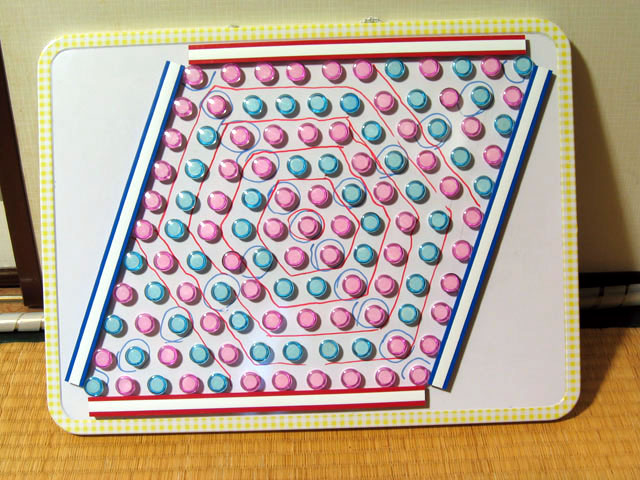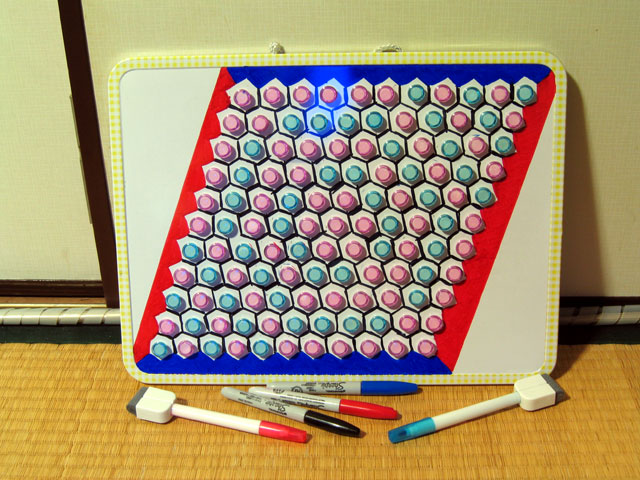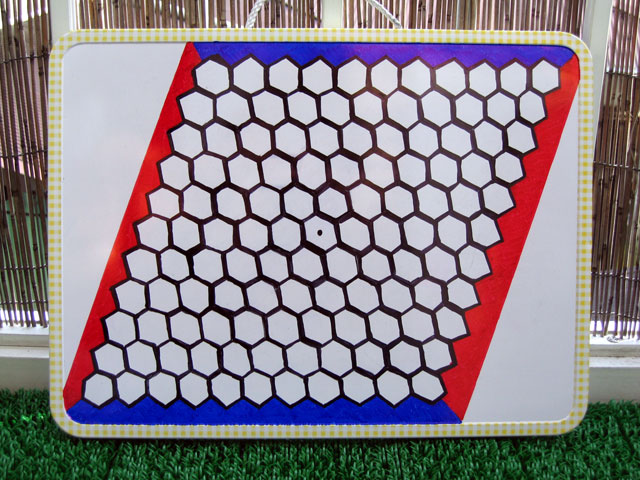Setting Out the Board
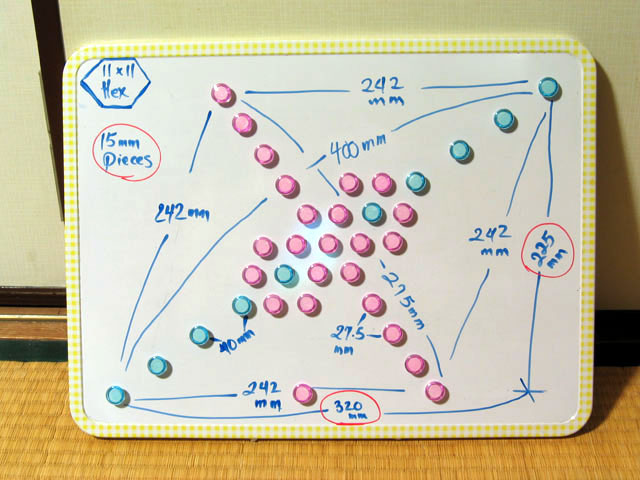
click here or on above photo for bigger image
I bought a metallic 30x40cm dry-erase board (also called "white-board") and packets of white-board magnets (15mm diameter). I bought these at a 100 Yen shop here in Japan. The magnets were ¥100 for packets of ten or fifteen, though I am still looking for better magnets. The board itself was, believe it or not, also ¥100.
I arranged the pieces in a hexagonal pattern in the center of the board, keeping the magnets spaced far enough apart to allow my fingers to easily place and remove them. I nearly filled the board and then found my diagonals and rhombus shape and cleared off the extra pieces. I determined that an 11x11 configuration was ideal for this board size and game piece size. I opened up the sizing a little, stretching the pieces to go from corner to corner. I also had to rotate the corners a little. The rhombus shape the results from the internal hexagonal pattern is not apparent, at first. Though, if you can get the two edges that "overlap" to run parallel to the long edges of your board, then you'll be OK -- at least for orientation. Sizing will be a different matter.
After getting the sizing and orientation determined from the first layout, I made the above "quasar" shape. It is contained within the overall hexagonal layout, but here just the corners and axes are needed. The blue line, 11 pieces, from corner to corner was first. Then I formed the three red, uh, pink, hexagons around the center pieces of the blue diagonal. I could then use that spacing to extend the second axis, the pink one from northwest to southeast. I then measured the distance from the ends of the four axes. In my case, the distances were 240 mm for two, and 245 for the other two. I was proud of myself for getting this close only from "eyeballing" the whole lineup of the guiding hexagons. I used a straight-edge to tap the axes -- sliding them into their final positions -- about 242 mm between each node.
The measurements for my layout are all above. The final shape, minus the labels, is below.

